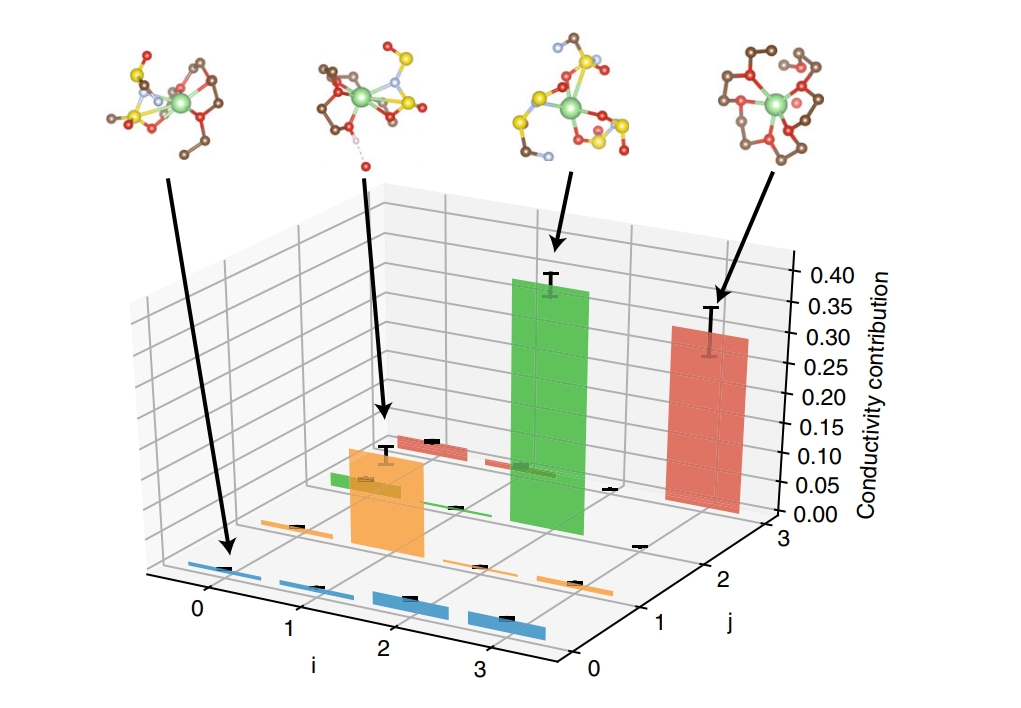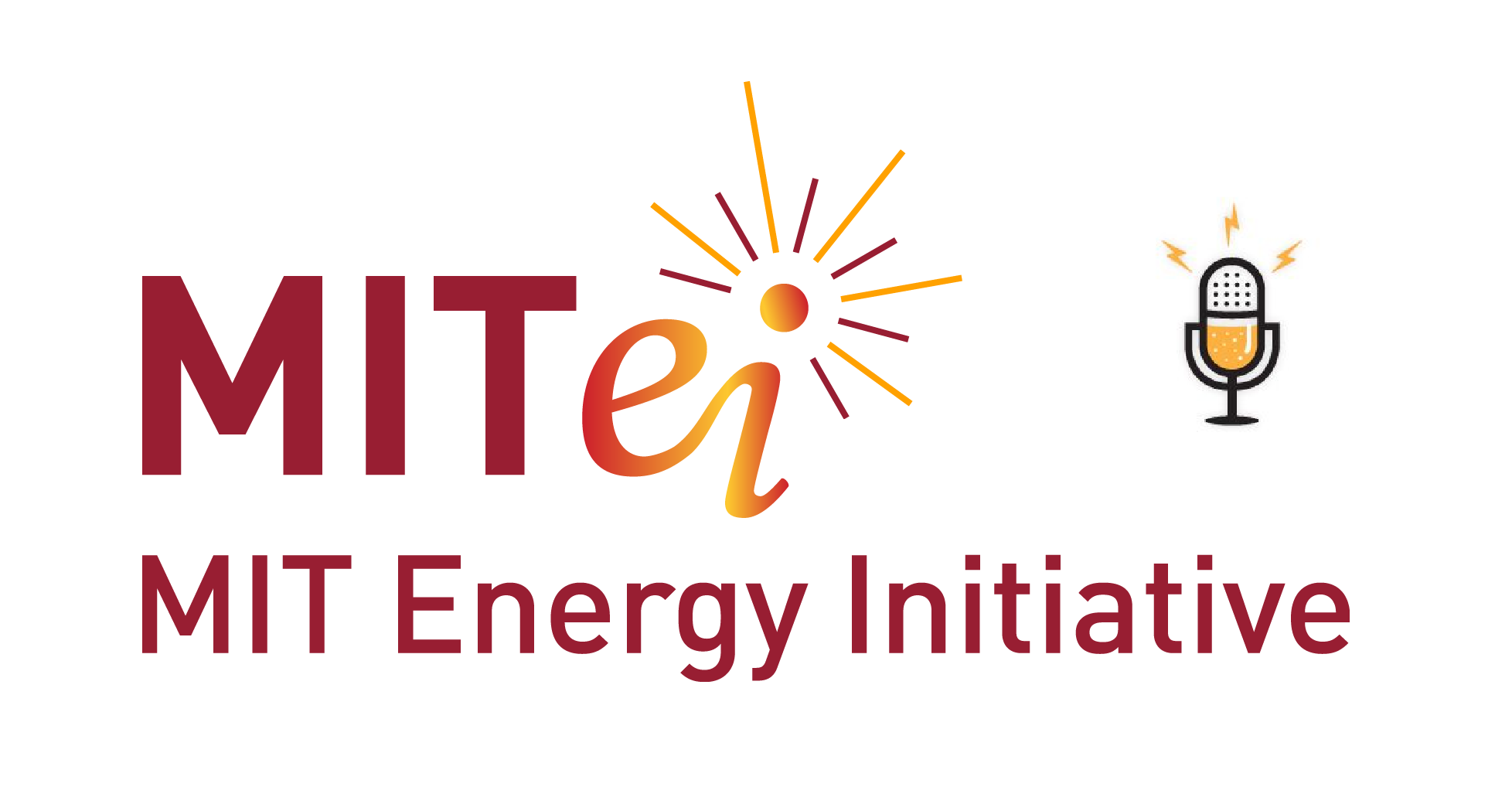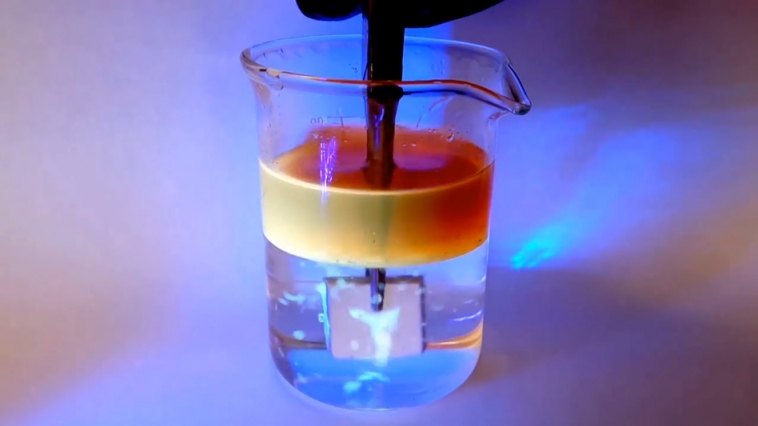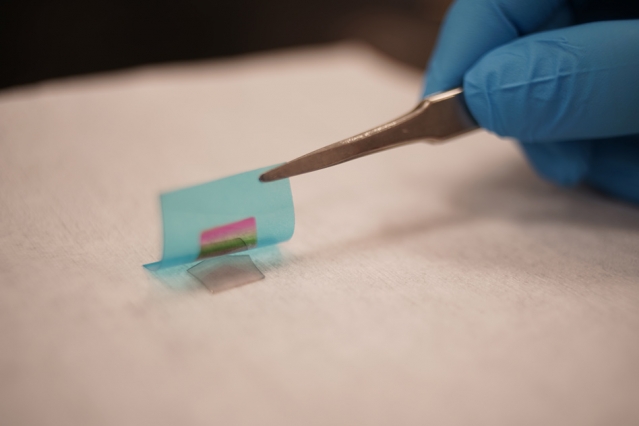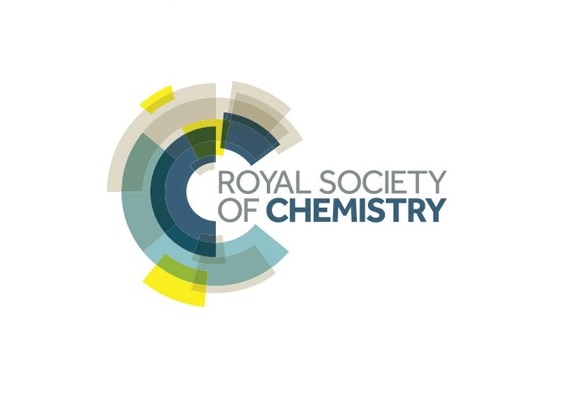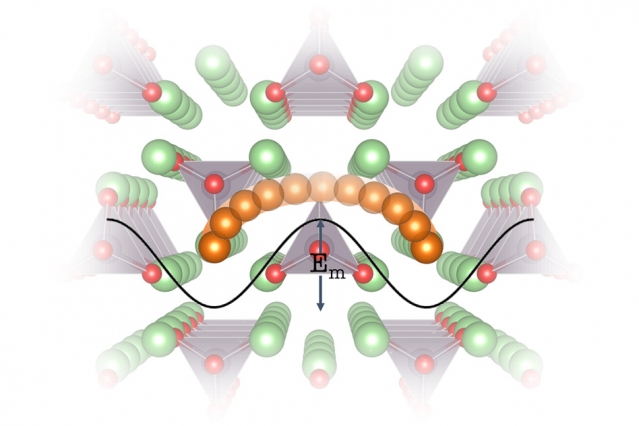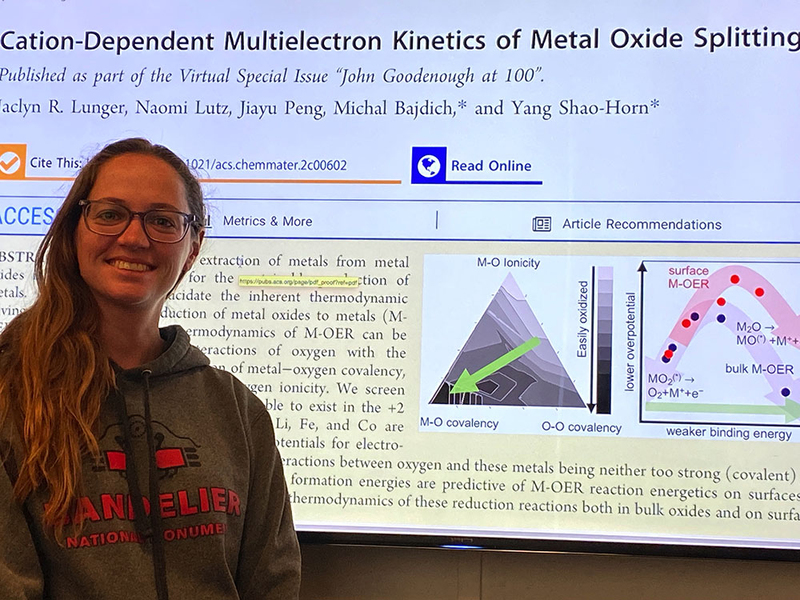
(Image: Courtesy of Yang Shao-Horn)
Team creates map for production of eco-friendly metals
New understanding of metal electrolysis could help optimize production of metals like lithium and iron.
(May 9th, 2022) In work that could usher in more efficient, eco-friendly processes for producing important metals like lithium, iron, and cobalt, researchers from MIT and the SLAC National Accelerator Laboratory have mapped what is happening at the atomic level behind a particularly promising approach called metal electrolysis. (By: | Materials Research Laboratory)
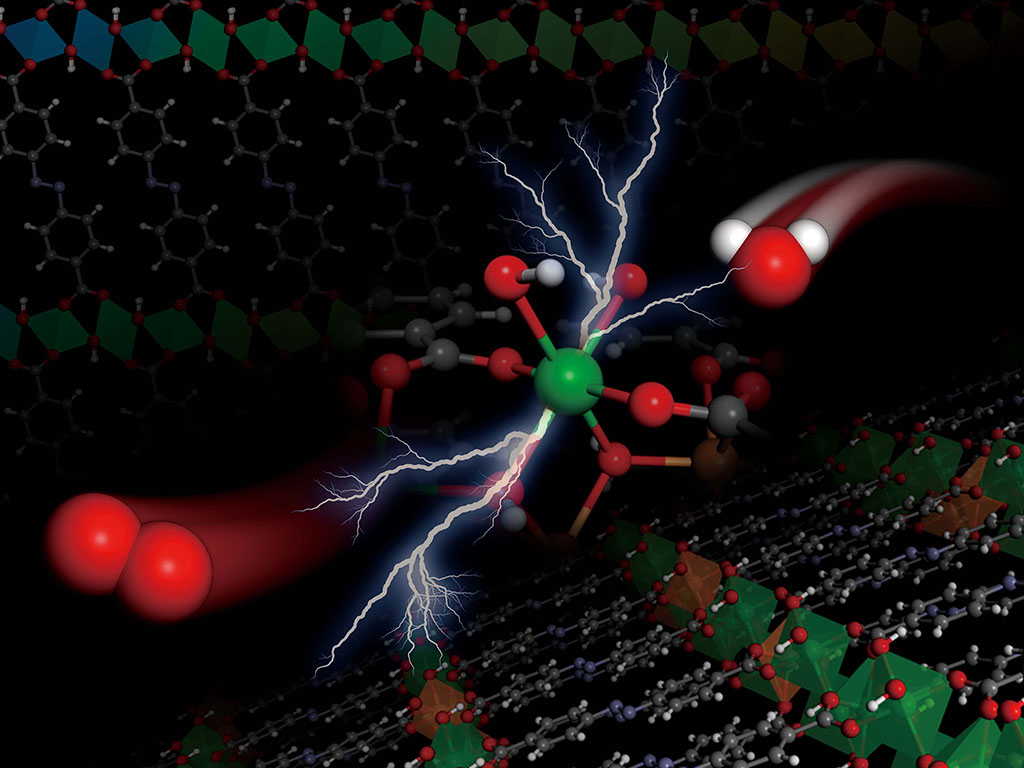
(Image: Courtesy of the researchers)
A new, inexpensive catalyst speeds the production of oxygen from water
The material could replace rare metals and lead to more economical production of carbon-neutral fuels.
(February 24, 2022) An electrochemical reaction that splits apart water molecules to produce oxygen is at the heart of multiple approaches aiming to produce alternative fuels for transportation. But this reaction has to be facilitated by a catalyst material, and today’s versions require the use of rare and expensive elements such as iridium, limiting the potential of such fuel production. (By: David L. Chandler | MIT News Office)
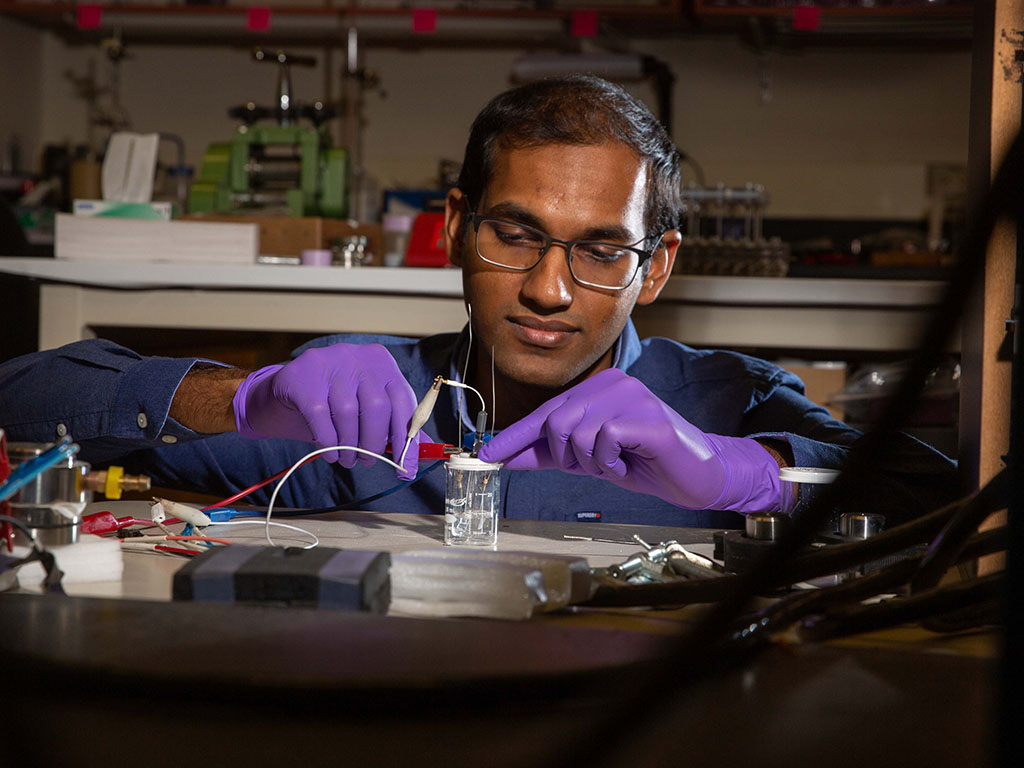
(Image: Courtesy of Thaneer Narayanan)
An energy-storage solution that flows like soft-serve ice cream
Researchers make the case for a semisolid electrochemical compound as a cost-efficient, grid-scale battery backup for wind and solar power.
(November 30, 2021) MIT researchers have developed a novel semisolid flow battery that uses a mixture containing dispersed manganese dioxide particles, along with an electrically conductive additive called carbon black, that enables efficient electrochemical energy conversion when reacted with a zinc suspension or plate. (By: Leda Zimmerman | MIT Energy Initiative)
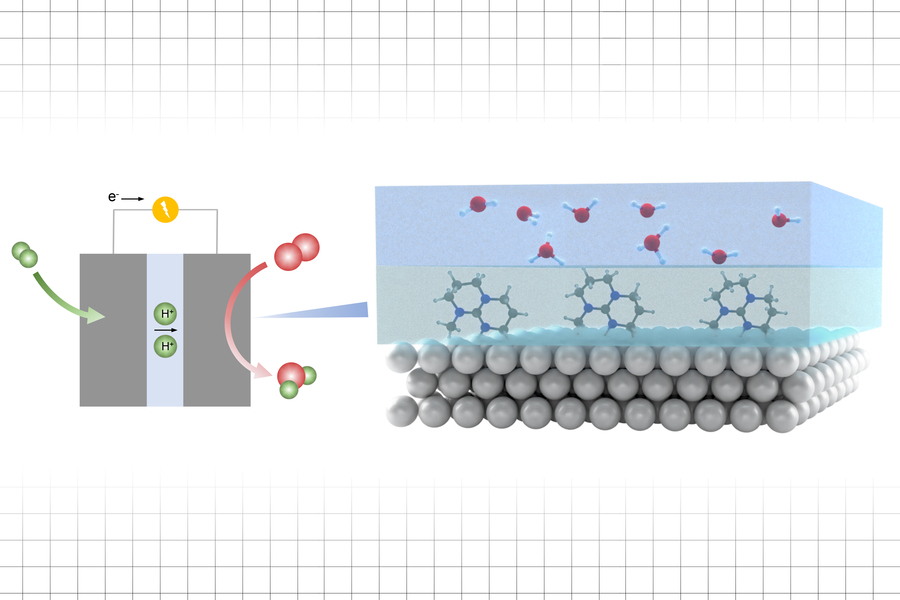
(Image: Courtesy of the researchers, edited by MIT News)
Making catalytic surfaces more active to help decarbonize fuels and chemicals
A new approach increases the efficiency of chemical reactions that are key to many industrial processes.
(September 7, 2021) Electrochemical reactions that are accelerated using catalysts lie at the heart of many processes for making and using fuels, chemicals, and materials — including storing electricity from renewable energy sources in chemical bonds, an important capability for decarbonizing transportation fuels. Now, research at MIT could open the door to ways of making certain catalysts more active, and thus enhancing the efficiency of such processes. (By: David L. Chandler | MIT News Office)
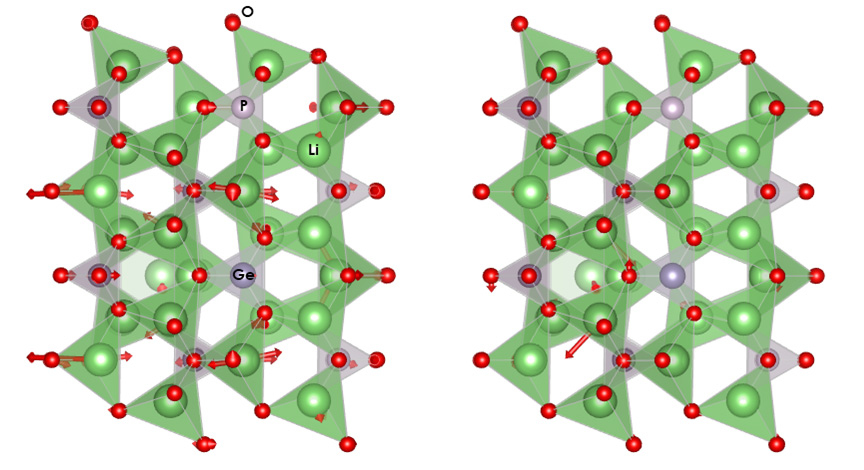
(Image: courtesy of the researchers)
Phonon catalysis could lead to a new field
By selectively heating specific phonons without heating the entire material, researchers have enhanced ion diffusion in a way that could have broad applications.
(May 28, 2021) Batteries and fuel cells often rely on a process known as ion diffusion to function. In ion diffusion, ionized atoms move through solid materials, similar to the process of water being absorbed by rice when cooked. Just like cooking rice, ion diffusion is incredibly temperature-dependent and requires high temperatures to happen fast. (By: Mary Beth Gallagher | Mechanical Engineering)
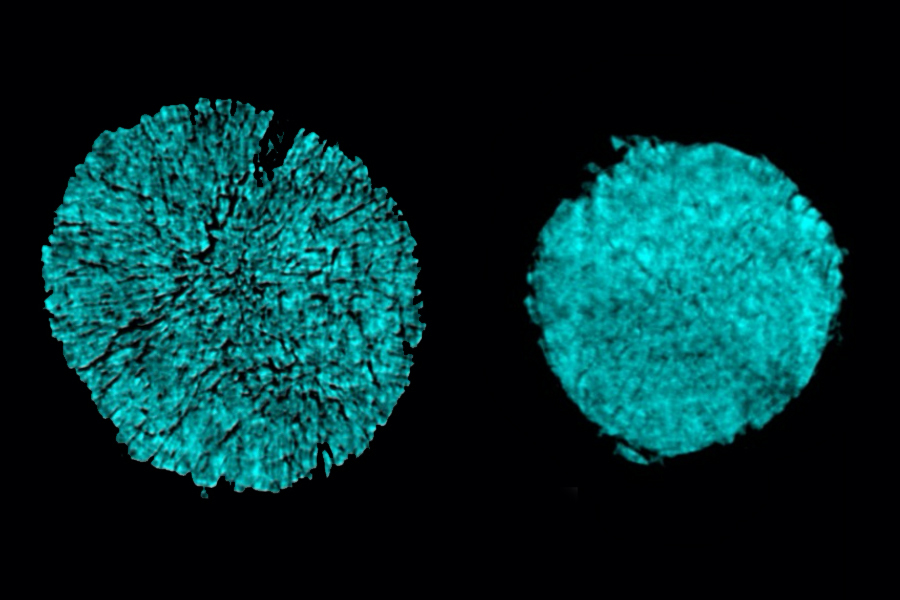
(Image: courtesy of the researchers)
Design could enable longer lasting, more powerful lithium batteries
Use of a novel electrolyte could allow advanced metal electrodes and higher voltages, boosting capacity and cycle life.
(March 25, 2021) Lithium-ion batteries have made possible the lightweight electronic devices whose portability we now take for granted, as well as the rapid expansion of electric vehicle production. But researchers around the world are continuing to push limits to achieve ever-greater energy densities — the amount of energy that can be stored in a given mass of material — in order to improve the performance of existing devices and potentially enable new applications such as long-range drones and robots. (By: David L. Chandler | MIT News Office)
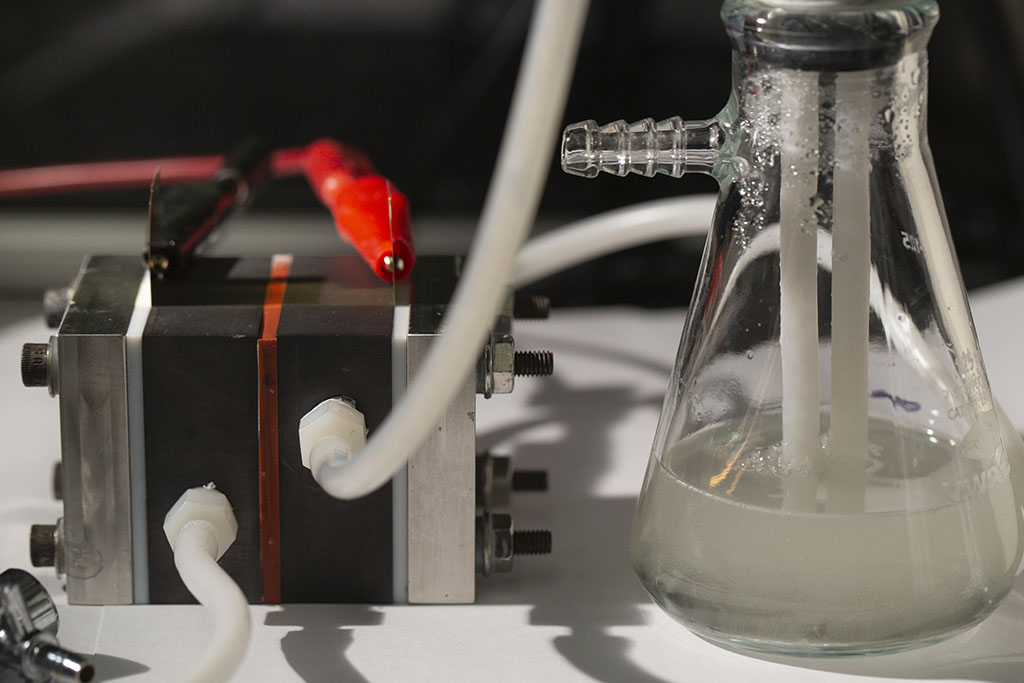
(Photo Credit: John Freidah)
Delivering life-saving oxygen
(November 11, 2020) At the peak of the Covid-19 outbreak in Italy, doctors and healthcare professionals were faced with harrowing decisions. Hospitals were running out of ventilators, forcing doctors to choose which patients had the best chance of survival, and which didn’t. (By: | )
Mobility Systems Center awards four projects for low-carbon transportation research
Topics include Covid-19 and urban mobility, strategies for electric vehicle charging networks, and infrastructure and economics for hydrogen-fueled transportation.
(August 18, 2020) The Mobility Systems Center (MSC), one of the MIT Energy Initiative (MITEI)’s Low-Carbon Energy Centers, will fund four new research projects that will allow for deeper insights into achieving a decarbonized transportation sector.. (By: Turner Jackson | MIT Energy Initiative)
Study unveils details of how a widely used catalyst splits water
“Gold standard” material for generating oxygen from water divulges its molecular mechanisms.
(May 21, 2020) Oxygen evolution reactions are important in a variety of industrial processes. A new study provides a detailed analysis of the process at a molecular level. As illustrated here, the researchers analyzed how molecules of water (H2O, left) are catalyzed by specific locations on a surface of ruthenium dioxide (center) to form molecules of oxygen (O2, right). (By: David L. Chandler | MIT News Office)
(Paper published in Nature Communications)
Using machine learning to process experimental data
(August 21, 2019) Understanding the dynamical processes that govern the performance of functional materials is essential for the design of next generation materials to tackle global energy and environmental challenges. Many of these processes involve the dynamics of individual atoms or small molecules in condensed phases. Molecular dynamics simulations remain one of the few tools for probing dynamical processes; however, due to the large amounts of data generated in each simulation, searching for relevant dynamics is “much worse than searching for a needle in a haystack.”
Now, Jeff Grossman and Yang Shao-Horn have a paper accepted in Nature Communications on the development of graph dynamical networks, an unsupervised learning approach for understanding dynamics from molecular dynamics simulations. This method now automates the process of learning from the experimental data, making the task of searching for relevant and important data much easier, and potentially finding insights that were previously overlooked. (DMSE MIT News)
MIT Energy Initiative awards seven Seed Fund grants for early-stage energy research
Annual MITEI awards support research on methane conversion, efficient energy provision, plastics recycling, and more.
(July 1, 2019) One of the most synthesized plastics, PET — found in plastic bottles — exhibits an extremely low degradation rate and its production is highly dependent on petroleum feedstocks. New research on the biodegradation of plastics will be funded by a MIT Energy Initiative Seed Fund. (MIT Energy Initiative | MIT News Office)
MIT Energy Initiative Podcast: Batteries and Storage
Hear Professor Yang Shao-Horn and Professor Don Sadoway discuss current research on energy storage.
(April 24, 2019) In this podcast, Bruce Gellerman from WBUR speaks with Prof. Donald Sadoway and Prof. Yang Shao-Horn. He says, “Today we’ll be pursuing the renewable and clean energy holy grail: storage. The ability to store solar, wind, and hydro energy and release it when the sun isn’t shining, the air is calm, and the water is still, promises to transform our electric power future. In this episode, we’ll explore the current state of storage technology, where it’s going, and how we’ll get there.” (MIT Energy Initiative Podcast)
Extending the life of low-cost, compact, lightweight batteries
New design could greatly extend the shelf life of single-use metal-air batteries for electric vehicles, off-grid storage, and other applications.
(November 8, 2018) Metal-air batteries are one of the lightest and most compact types of batteries available, but they can have a major limitation: When not in use, they degrade quickly, as corrosion eats away at their metal electrodes. Now, MIT researchers have found a way to substantially reduce that corrosion, making it possible for such batteries to have much longer shelf lives. (By: David L. Chandler | MIT News Office)
Study opens route to flexible electronics made from exotic materials
Cost-effective method produces semiconducting films from materials that outperform silicon.
(October 8, 2018) MIT researchers have devised a way to grow a single crystalline compound semiconductor on its substrate through two-dimensional materials. The compound semiconductor thin film is then exfoliated by a flexible substrate, showing the rainbow color that comes from thin film interference. (By: David L. Chandler | MIT News Office)
Shao-Horn wins 2018 RSC Faraday Medal
(July 31, 2018) Yang Shao-Horn is W.M. Keck Professor of Energy at MIT and the first female winner of this prestigious medal. Her research is centered on exploiting chemical/materials physics and physical/materials chemistry principles at interface and in bulk to design materials/processes and control the kinetics of (electro)chemical reactions including lithium ion storage and making of sustainable fuels such as water splitting and CO2 reduction, critical for the deployment of clean energy technologies. Professor Shao-Horn is a member of National Academy of Engineering and is among the World’s Most Influential Scientific Minds and Highly Cited Researchers (Thomson Reuters) based on over 250 archival journal papers and over 200 lectures. (DMSE MIT News)
A new way to find better battery materials
Design principles could point to better electrolytes for next-generation lithium batteries.
(March 25, 2018) A new approach to analyzing and designing new ion conductors — a key component of rechargeable batteries — could accelerate the development of high-energy lithium batteries, and possibly other energy storage and delivery devices such as fuel cells, researchers say. (By: David L. Chandler | MIT News Office)
Researchers clarify mystery about proposed battery material
Study explains conflicting results from other experiments, may lead to batteries with more energy per pound.
(August 15, 2017) This series of photographs shows the chemical reaction that occurs during the charging of a lithium oxygen battery using lithium iodide as an additive. (By: David L. Chandler | MIT News Office)
Releasing oxygen from water: Better catalysts for energy storage devices
(JUNE 15, 2017) Yang Shao-Horn of mechanical engineering and materials science and engineering (left), Livia Giordano of MIT and Milano-Bicocca University (right), and their colleagues have performed experimental and theoretical studies that provide new understanding of why certain catalysts are so effective at encouraging the release of oxygen from water during electrolysis—a key process in many energy storage devices. (By: Nancy W. Stauffer | MIT Energy Initiative)
Study: Some catalysts contribute their own oxygen for reactions
Finding may help researchers fine-tune metal-oxide catalysts to enhance energy storage technology.
(January 9, 2017) New research shows that when metal oxide (flat array of atoms at bottom) is used as a catalyst for splitting water molecules, some of the oxygen produced comes out of the metal oxide itself, not just from the surrounding water. This was proved by first using water with a heavier isotope of oxygen (oxygen 18, shown in white), and later switching to ordinary water (made with oxygen 16, shown in red). The detection of the heavier oxygen 18 in the resulting gas proves that this came out of the catalyst. (By: David L. Chandler | MIT News Office)
Water vapor sets some oxides aflutter
Newly discovered phenomenon could affect materials in batteries and water-splitting devices.
(October 3, 2016) These images, taken from a transmission electron microscope, show a perovskite material oscillating as it is exposed to water vapor and a beam of electrons. (By: David L. Chandler | MIT News Office)
New materials improve oxygen catalysis
Highly active catalysts could be key to improved energy storage in fuel cells and advanced batteries.
(September 17, 2013) A diagram of the molecular structure of double perovskite shows how atoms of barium (green) and a lanthanide (purple) are arranged within a crystalline structure of cobalt (pink) and oxygen (red). (By: David L. Chandler | MIT News Office)
New technique reveals lithium in action
Fundamental reactions behind advanced battery technology, revealed in detail by advanced imaging method, could lead to improved materials.
(October 8, 2012) A solid-state lithium-air battery (highlighted in orange) is positioned inside a test chamber at the Advanced Light Source (ALS) at Lawrence Berkeley National Laboratory, in preparation for its testing using X-ray photoelectron microscopy. (By: David L. Chandler | MIT News Office)
Highly efficient oxygen catalyst found
New catalyst, made of inexpensive and abundant materials, could prove useful in rechargeable batteries and hydrogen-fuel production.
(October 28, 2011) Materials Science and Engineering Graduate Student Jin Suntivich (left) and Mechanical Engineering Graduate Student Kevin J. May (right) inspecting the electrochemical cell for oxygen evolution reaction experiment. (By: David L. Chandler | MIT News Office)
How to choose a catalyst
MIT researchers provide a simple principle to predict which materials will perform best in fuel cells and metal air batteries.
(June 13, 2011) This diagram illustrates the way the electronic configuration of metal ions can control the activity of metal oxides for oxygen reduction, varying it by a factor of at least 10,000 times. This can serve as a design principle (symbolized as a “volcano plot”) to screen metal oxide candidates and accelerate the development of efficient fuel cells, metal-air batteries and other energy storage technologies. (By: David L. Chandler | MIT News Office)
